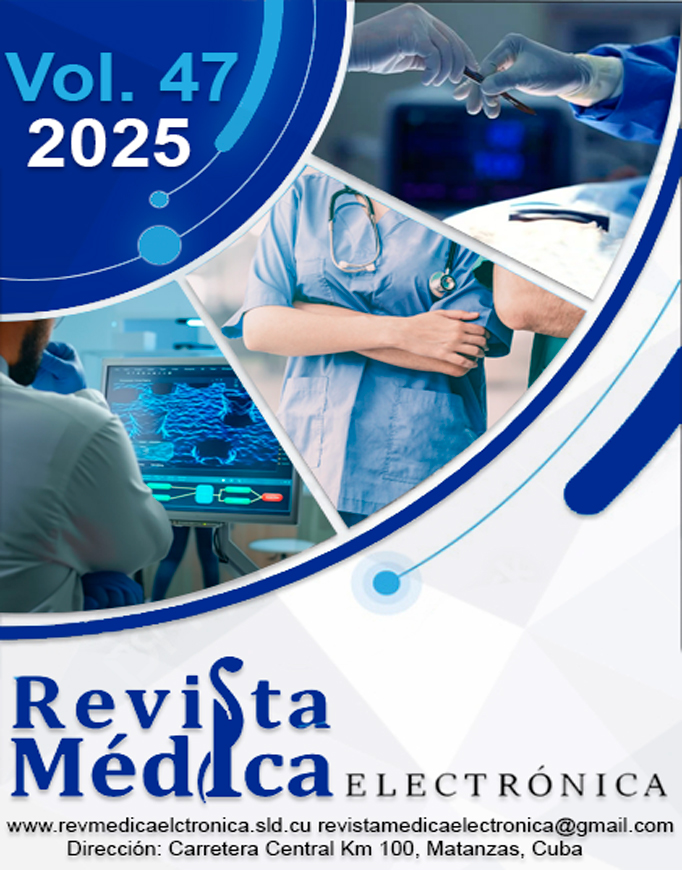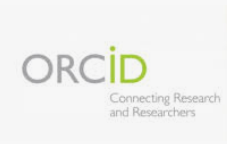Effects of virtual teaching-learning environment on the development of skills in Orthodontics
Keywords:
virtual environments; teaching-learning; skills; dentistryAbstract
Introduction: Virtual teaching of learning implies that teachers and students participate and interact in a virtual environment, which requires impact studies that demonstrate its advantages and limitations in specific teaching-educational processes, as in the case of dentistry.
Objective: To evaluate the effectiveness of an intervention program based on digital learning environments in the development of skills in the specialty of orthodontics.
Methods: A sample of 35 Dentistry students from the University of Guayaquil is studied using a questionnaire (previously validated by experts). Competencies were investigated before and after implementing a process of virtual teaching-learning environments for 12-week.
Results: The level of skills of the dentistry specialty improves significantly in the post-test (p=0.000); the level of theoretical knowledge presented a rating of Good in 42.85 % of the sample in the post-test (p=0.000); the level of specific practical skills in dental treatment obtained a rating of Good in 40 % of the sample (p=0.000); and at the level of communication and relationship with the patients, the rating of Good reached 57.15% in the post-test (p=0.000).
Conclusions: The initial competencies recorded were classified as insufficient, with significant improvements after implementing the intervention process based on digital learning environments. The average performance of the students increased by 25 %, which shows the effectiveness of the program in improving theoretical and practical orthodontic skills.
Downloads
References
Sagarra-Romero L, Ruidiaz Peña M, Monroy Antón A, et al. ithlete Heart Rate Variability app: knowing when to train. Br J Sports Med. 2017;51(18):1373-4. DOI: 10.1136/bjsports-2016-097303.
Gadea-Uribarri H, Lago-Fuentes C, Bores-Arce A, et al. External Load Evaluation in Elite Futsal: Influence of Match Results and Game Location with IMU Technology. J funct morphol kinesiol. 2024;9(3):140. DOI: 10.3390/jfmk9030140.
Calero-Morales S, Vinueza-Burgos GC, Yance-Carvajal CL, et al. Gross motor development in preschoolers through conductivist and contructivist physical-recreational activities: Comparative research. Sports. 2023;11(3):61. DOI: 10.3390/sports11030061.
Datar U, Desai KM, Kamat MS. COVID-19 and virtual learning in dentistry: Perspective on challenges and opportunities. J Educ Health Promot. 2021;10(1):2. DO: 10.4103/jehp.jehp_628_20.
Concepción Obregón T, Fernández Lorenzo A, Matos Rodríguez A, et al. Habilidades profesionales de intervención clínica según modo de actuación de estudiantes de tercer año de Estomatología. Educ Méd Super [Internet]. 2017 [citado 11/08/2024];31(1):153-65. Disponible en: https://ems.sld.cu/index.php/ems/article/view/941
Li Y, Ye H, Ye F, et al. The current situation and future prospects of simulators in dental education. J Med Internet Res. 2021;23(4):e23635. DOI: 10.2196/23635.
Stefanac SJ, Nesbit SP. Diagnosis and Treatment Planning in Dentistry – E-Book. 3a ed. Piladelphia: Elsevier Health Sciences; 2015.
Mercado-Cruz E, Morales-Acevedo JA, Lugo-Reyes G, et al. Telesimulación: una estrategia para desarrollar habilidades clínicas en estudiantes de medicina. Investigación en educación médica. 2021;10(40):19-28. DOI: 10.22201/fm.20075057e.2021.40.21355.
Chimea T, Kanji Z, Schmitz S. Assessment of clinical competence in competency-based education. Can J Dent Hyg [Internet]. 2020 [citado 11/08/2024];54(2):83-91. Disponible en: https://www.ncbi.nlm.nih.gov/pmc/articles/PMC7668267/
Moussa R, Alghazaly A, Althagafi N, et al. Effectiveness of virtual reality and interactive simulators on dental education outcomes: systematic review. Eur J Dent. 2022;16(01):14-31. DOI: 10.1055/s-0041-1731837.
Morán-Pedroso L, Chamorro-Balseca NC, Sánchez-Córdova B, et al. Análisis pedagógico de las adaptaciones cardiovasculares del equipo campeón universitario de voleibol masculino. Rev Méd Electrón [Internet]. 2024 [citado 11/08/2024];46:e5855. Disponible en: http://scielo.sld.cu/scielo.php?pid=S1684-18242024000100080&script=sci_arttext&tlng=pt
Game Mendoza KM, Vinueza Burgos GdC, Icaza Rivera DP, et al. Efectos de las estrategias colaborativas en el proceso académico de enseñanza-aprendizaje de voleibolistas prejuveniles. Retos. 2024;61:1172-83. DOI: 10.47197/retos.v61.109363.
El-Sabagh HA. Adaptive e-learning environment based on learning styles and its impact on development students' engagement. Int J Educ. 2021;18(1). DOI: 10.1186/s41239-021-00289-4.
Sánchez Trujillo MA, Rodríguez Flores EA. Competencia digital en docentes de Ciencias de la Salud de una universidad privada de Lima. Educ Méd Super [Internet]. 2021 [citado 11/08/2024];35(1). Disponible en: http://scielo.sld.cu/scielo.php?pid=S0864-21412021000100005&script=sci_arttext&tlng=en
Cavalcanti AP, Barbosa A, Carvalho R, et al. Automatic feedback in online learning environments: A systematic literature review. Computers and Education: Artificial Intelligence. 2021;2:100027. DOI: 10.1016/j.caeai.2021.100027.
Stoilov M, Trebess L, Klemmer M, et al. Comparison of digital self-assessment systems and faculty feedback for tooth preparation in a preclinical simulation. Int J Environ Res Public Health. 2021;18(24):13218. DOI: 10.3390/ijerph182413218.
Varvara G, Bernardi S, Bianchi S, et al. Dental education challenges during the COVID-19 pandemic period in Italy: Undergraduate student feedback, future perspectives, and the needs of teaching strategies for professional development. Healthcare. 2021;9(4):454. DOI: 10.3390/ealthcare9040454.
Sholihin M, Sari RC, Yuniarti N, et al. A new way of teaching business ethics: The evaluation of virtual reality-based learning media. Int J Educ Manag. 2020;18(3):100428. DOI: 10.1016/j.ijme.2020.100428.
Calero-Morales S, Villavicencio-Alvarez VE, Flores-Abad E, et al. Pedagogical control scales of vertical jumping performance in untrained adolescents (13–16 years): research by strata. PeerJ. 2024;12:e17298. DOI: 10.7717/peerj.17298.
Kolb DA. Experiential learning: Experience as the source of learning and development. New Jersey: FT Press; 2014.
Elendu C, Amaechi DC, Okatta AU, et al. The impact of simulation-based training in medical education: A review. Medicine. 2024;103(27):e38813. DOI: 10.1097/MD.0000000000038813.
Mlambo M, Dreyer AR, Dube R, et al. Transformation of medical education through decentralised training platforms: A scoping review. Rural and remote health. 2018;18(1):1-16. DOI: 10.22605/RRH4337.
Papadopoulou P, Chui KT, Daniela L, et al. Virtual and augmented reality in medical education and training: innovative ways for transforming medical education in the 21st century. En: Lytras MD, Aljohani N, Daniela L. Cognitive computing in technology-enhanced learning [Internet]. Pensilvania: IGI Global; 2019 [citado 11/08/2024]. Disponible en: https://www.igi-global.com/gateway/chapter/228494
Kraus S, Schiavone F, Pluzhnikova A, et al. Digital transformation in healthcare: Analyzing the current state-of-research. J Bus Res. 2021;123:557-67. DOI: 10.1016/j.jbusres.2020.10.030.
Kleist E, Henke P, Ruehrmund L, et al. Impact of Structural Compliance of a Six Degree of Freedom Joint Simulator on Virtual Ligament Force Calculation in Total Knee Endoprosthesis Testing. Life. 2024;14(4):531. DOI: 10.3390/life14040531.
Downloads
Published
Versions
- 2025-03-14 (2)
- 2025-03-01 (1)
How to Cite
Issue
Section
License
Copyright (c) 2025 Revista Médica Electrónica (Medical Electronic Journal)

This work is licensed under a Creative Commons Attribution-NonCommercial 4.0 International License.
All content published in this journal is Open Access, distributed under the terms of the CC BY-NC 4.0 License.
It allows:
- Copy and redistribute published material in any medium or format.
- Adapt the content.
This will be done under the following terms:
- Attribute the authors' credits and indicate whether changes were made, in which case it must be in a reasonable way.
- Non-commercial use.
- Recognize the journal where it is published.
The copyrights of each article are maintained, without restrictions.






